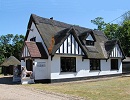Contact Seller
Martlesham Antiques
Tel01394 386732or07889724434Please quote Antiques Atlas.


 Pair of Kutani Antique vases
Pair of Kutani Antique vases
 Pair of Japanese Nishikide Pear Shaped Vases
Pair of Japanese Nishikide Pear Shaped Vases
 Large Bamboo Chinese Wedding Basket
Large Bamboo Chinese Wedding Basket
 Rare Chinese Cloisonne Large Jardiniere 19thc
Rare Chinese Cloisonne Large Jardiniere 19thc
 Antique Censer Bowl, Japanese, Bronze, Incense
Antique Censer Bowl, Japanese, Bronze, Incense
 Vintage Decorative Vase, Japanese, Ceramic, Bamboo
Vintage Decorative Vase, Japanese, Ceramic, Bamboo
 Large (34cm) Japanese Bronze / Cloisonne Censer,c1880
Large (34cm) Japanese Bronze / Cloisonne Censer,c1880
 Carved Pillow Box
Carved Pillow Box
 19th Century Tibetan Bone Carving
19th Century Tibetan Bone Carving
 19th Century Stag Antler Kiseruzutsu PIpe Case
19th Century Stag Antler Kiseruzutsu PIpe Case
 Cloisonné vase Meiji period circa 1900
Cloisonné vase Meiji period circa 1900
 Chinese Blue Cloisonne Brush Bowl on Stand, Qing
Chinese Blue Cloisonne Brush Bowl on Stand, Qing
Non UK callers :
+44 1394 386732
or +44 7889724434
or +44 7889724434
pair of 19th Century Chinese Cloisonné incense burners


1 of 6
A decorative pair of 19th Century Chinese Cloisonné incense burners in the style of dogs of Foo.
9" x 5" x 8" high.
23cm x 13cm x 20cm high.
Foreign influence contributed to the development of cloisonné during the early fourteenth to fifteenth century in China. The earliest securely dated Chinese cloisonné is from the reign of the Ming Xuande emperor (1426–35). However, cloisonné is recorded during the previous Yuan dynasty, and it has been suggested that the technique was introduced to China at that time via the western province of Yunnan, which, under Mongol rule, received an influx of Islamic people. A very few cloisonné objects have been dated on stylistic grounds to the Yongle reign (1403–24) of the early Ming dynasty.
Cloisonné is the technique of creating designs on metal vessels with colored-glass paste placed within enclosures made of copper or bronze wires, which have been bent or hammered into the desired pattern. Known as cloisons (French for “partitions”), the enclosures generally are either pasted or soldered onto the metal body. The glass paste, or enamel, is colored with metallic oxide and painted into the contained areas of the design. The vessel is usually fired at a relatively low temperature, about 800°C. Enamels commonly shrink after firing, and the process is repeated several times to fill in the designs. Once this process is complete, the surface of the vessel is rubbed until the edges of the cloisons are visible. They are then gilded, often on the edges, in the interior, and on the base.
Cloisonné objects were intended primarily for the furnishing of temples and palaces, because their flamboyant splendor was considered appropriate to the function of these structures but not well suited to a more restrained atmosphere, such as that of a scholar’s home. This opinion was expressed by Cao Zhao (or Cao Mingzhong) in 1388 in his influential Gegu Yaolun (Guide to the Study of Antiquities), in which cloisonné was dismissed as being suitable only for lady’s chambers. However, by the period of Emperor Xuande, this ware came to be greatly prized at court.
Department of Asian Art, The Metropolitan Museum of Art
SellerMartlesham Antiques
View all stock from
Martlesham Antiques

 Martlesham Antiques
Martlesham Antiques
The Thatched Roadhouse
Main Rd, Martlesham
Suffolk
IP12 4RJ
Tel : 01394 386732
or : 07889724434
Non UK callers : +44 1394 386732 or +44 7889724434
Get directions to Martlesham Antiques
9" x 5" x 8" high.
23cm x 13cm x 20cm high.
Foreign influence contributed to the development of cloisonné during the early fourteenth to fifteenth century in China. The earliest securely dated Chinese cloisonné is from the reign of the Ming Xuande emperor (1426–35). However, cloisonné is recorded during the previous Yuan dynasty, and it has been suggested that the technique was introduced to China at that time via the western province of Yunnan, which, under Mongol rule, received an influx of Islamic people. A very few cloisonné objects have been dated on stylistic grounds to the Yongle reign (1403–24) of the early Ming dynasty.
Cloisonné is the technique of creating designs on metal vessels with colored-glass paste placed within enclosures made of copper or bronze wires, which have been bent or hammered into the desired pattern. Known as cloisons (French for “partitions”), the enclosures generally are either pasted or soldered onto the metal body. The glass paste, or enamel, is colored with metallic oxide and painted into the contained areas of the design. The vessel is usually fired at a relatively low temperature, about 800°C. Enamels commonly shrink after firing, and the process is repeated several times to fill in the designs. Once this process is complete, the surface of the vessel is rubbed until the edges of the cloisons are visible. They are then gilded, often on the edges, in the interior, and on the base.
Cloisonné objects were intended primarily for the furnishing of temples and palaces, because their flamboyant splendor was considered appropriate to the function of these structures but not well suited to a more restrained atmosphere, such as that of a scholar’s home. This opinion was expressed by Cao Zhao (or Cao Mingzhong) in 1388 in his influential Gegu Yaolun (Guide to the Study of Antiquities), in which cloisonné was dismissed as being suitable only for lady’s chambers. However, by the period of Emperor Xuande, this ware came to be greatly prized at court.
Department of Asian Art, The Metropolitan Museum of Art
Price The price has been listed in British Pounds.
Conversion rates as of 3/APR/2025. Euro & Dollar prices will vary and should only be used as a guide.
Always confirm final price with dealer.
Date 1880
Late 19th Century Antiques Origin Chinese
Item code as256a1255
Status Sold
£3200.00 
$4213.76 
€3789.76 

$

€

Conversion rates as of 3/APR/2025. Euro & Dollar prices will vary and should only be used as a guide.
Always confirm final price with dealer.
View all stock from
Martlesham Antiques

 Martlesham Antiques
Martlesham AntiquesThe Thatched Roadhouse
Main Rd, Martlesham
Suffolk
IP12 4RJ
Tel : 01394 386732
or : 07889724434
Non UK callers : +44 1394 386732 or +44 7889724434
Get directions to Martlesham Antiques
You may also be interested in
 Pair of Kutani Antique vases
Pair of Kutani Antique vases
 Pair of Japanese Nishikide Pear Shaped Vases
Pair of Japanese Nishikide Pear Shaped Vases
 Large Bamboo Chinese Wedding Basket
Large Bamboo Chinese Wedding Basket
 Rare Chinese Cloisonne Large Jardiniere 19thc
Rare Chinese Cloisonne Large Jardiniere 19thc
 Antique Censer Bowl, Japanese, Bronze, Incense
Antique Censer Bowl, Japanese, Bronze, Incense
 Vintage Decorative Vase, Japanese, Ceramic, Bamboo
Vintage Decorative Vase, Japanese, Ceramic, Bamboo
 Large (34cm) Japanese Bronze / Cloisonne Censer,c1880
Large (34cm) Japanese Bronze / Cloisonne Censer,c1880
 Carved Pillow Box
Carved Pillow Box
 19th Century Tibetan Bone Carving
19th Century Tibetan Bone Carving
 19th Century Stag Antler Kiseruzutsu PIpe Case
19th Century Stag Antler Kiseruzutsu PIpe Case
 Cloisonné vase Meiji period circa 1900
Cloisonné vase Meiji period circa 1900
 Chinese Blue Cloisonne Brush Bowl on Stand, Qing
Chinese Blue Cloisonne Brush Bowl on Stand, Qing







